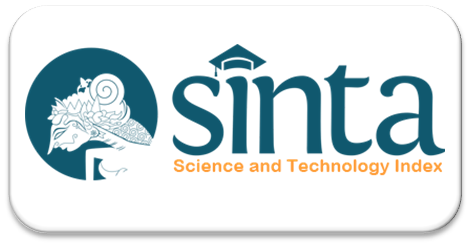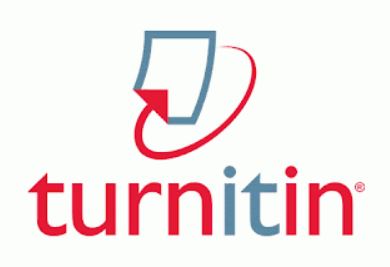Effectiveness of Deep Breath Relaxation Technique to Reduce Acute Pain in Spontaneous Post Partum Patients
DOI:
https://doi.org/10.35960/vm.v17i2.1454Keywords:
Acute Pain, Spontaneous Post Partum, Deep Breathing RelaxationAbstract
The puerperium phase refers to the period immediately after childbirth for 6 weeks or 42 days, in which case the reproductive organs will undergo subtle changes that resemble the changes that occurred before pregnancy. The main factor causing the high maternal mortality rate is the lack of care and attention given to postpartum women. The purpose of this case study is to assess the effectiveness of breathing relaxation techniques in reducing acute pain in postpartum patients. This study used case study methodology to investigate the patient's experience during the nursing process. The nursing process includes nursing assessment, nursing diagnosis, nursing intervention, nursing implementation, and nursing evaluation. The results showed that deep breath relaxation for 2x24 hours, before the intervention, the patient complained of pain in the birth canal with a pain scale of 5 (moderate). After the intervention, the patient's complaints of pain in the birth canal decreased with a pain scale of 3 (mild). In conclusion, deep breath relaxation is effective as an effort to reduce the intensity/level of pain in postpartum patients.
References
Antika, F. Y., Ajiningtyas, E. S., & Astuti, D. (2023). Teknik Relaksasi Nafas Dalam Pada Ny. M Untuk Menurunkan Skala Nyeri Post Partum Dengan Laserasi Perineum di PKD Kedungjati. Jurnal Ilmiah Multidisiplin, 1(7), 13–19. https://doi.org/10.5281/zenodo.8179958 Teknik
Dinkes Banyumas. (2022). Profil Kesehatan 2022 (Issue 1). https://static.banyumaskab.go.id/website/documents/dinkes/2023/Profil Kesehatan Tahun 2022 Dinas Kesehatan Kab. Banyumas.pdf
Fajriani, F., Arif, Y., & Deswita, D. (2021). Analisis Faktor yang Berhubungan dengan Pelaksanaan Manajemen Nyeri Non Farmakologis Oleh Perawat Pelaksana di Irna Non Bedah RSUP Dr M Djamil Padang Tahun 2015. Jurnal Ilmiah Universitas Batanghari Jambi, 21(3), 1347. https://doi.org/10.33087/jiubj.v21i3.1746
Kementrian Kesehatan RI. (2024). Agar Ibu dan Bayi Selamat. https://sehatnegeriku.kemkes.go.id/baca/blog/20240125/3944849/agar-ibu-dan-bayi-selamat/
Ningrum, E. W., & Nurhoeriyah. (2018). Hubungan Antara Riwayat Hipertensi Dengan Kejadian Preeklamsia Pada Ibu Bersalin di RSUD Prof. Dr. Margono Soekardjo Purwokerto. Analytical Biochemistry, 11(1), 1–5.
Prabawa, R. S., Dami, M., & Purwaningsih, I. (2022). Implementasi Terapi Relaksasi Nafas Dalam Untuk Penurunan Nyeri Pada Pasien Fraktur Post Operasi. Jurnal Keperawatan, Vol.1, 384–394. https://jurnal.stikesbethesda.ac.id/index.php/p/article/view/297/203
Saputri, R., Ayubbana, S., & HS, S. A. S. (2022). Penerapan Relaksasi Nafas Dalam terhadap Nyeri Kepala Pasien Hipertensi di Ruang Jantung RSUD Jend. Ahmad Yani Kota Metro. Jurnal Cendikia Muda, 2(4), 506–513. https://jurnal.akperdharmawacana.ac.id/index.php/JWC/article/view/378/239
Susilawati, Utari Kartaatmadja, F. S., & Suherman, R. (2023). Pengaruh Teknik Relaksasi Nafas Dalam Terhadap Intensitas Nyeri Pasien Post Partum Sectio Caesarea Di Ruang Rawat Nifas Rsud Sekarwangi Sukabumi. Media Informasi, 19(1), 13–19. https://doi.org/10.37160/bmi.v19i1.53
Vitaisabella, Y., Maryati, S., Kesehatan, P., & Husada, K. (2022). Penerapan Teknik Relaksasi Tarik Nafas Dalam Pada Pasien Hipertensi Dengan Nyeri Kepala Akut Di Puskesmas Pajangan Bantul. Jurnal STIKES Bethesda, 3(6), 415–423.
Downloads
Published
How to Cite
Issue
Section
License
Copyright (c) 2024 Revica Nur Fitriani, Ema Wahyu Ningrum

This work is licensed under a Creative Commons Attribution-ShareAlike 4.0 International License.
Submitted paper will be firstly reviewed by the editors to determine whether the paper meet the edition theme and submission guidelines. Papers which meet the theme and the guidelines will be assigned to selected reviewers for peer-reviews. Viva Medika: Jurnal Kesehatan, Kebidanan dan Keperawatan is a double blind peer-reviewed journal which involves reviewers based on their experties relevant to the topic of the paper. Final decision of paper acceptance is solely decided by the editors according to reviewers' comment.
Plagiarism and self-plagiarism are prohibited. Viva Medika: Jurnal Kesehatan, Kebidanan dan Keperawatan uses PlagiarismCheckerX and iThenticate to scan papers for detecting plagiarism. Thus, Appropriate citation and quotation should be used

.png)








